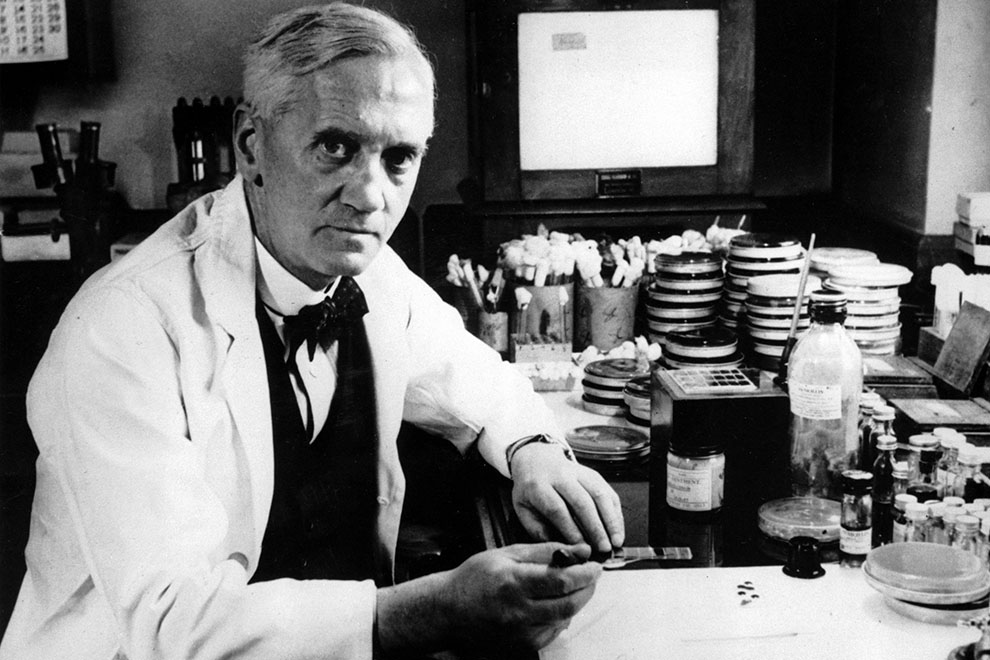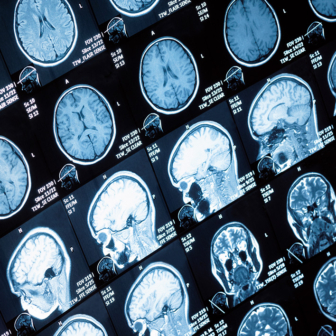Alarm bells have been ringing increasingly loudly in Britain, the United States and the World Health Organization about antibiotic resistance. It seems the world is suddenly sitting up and beginning to worry about this looming catastrophe. Britain’s chief medical officer, Dame Sally Davies, has called it a threat as great as terrorism or climate change.
The World Health Organization estimates that 25,000 people in Europe died last year directly because of resistance. The number of deaths in the United States is probably of a similar order. The toll in Australia is hard to estimate, but extrapolating from overseas numbers suggests 1500 to 2000 deaths a year, somewhere near the annual carnage from motor vehicle accidents. The deaths occur because the antibiotics given to people with life-threatening infections are no longer effective against the infecting organisms because they have developed resistance.
Before looking at exactly what resistance is, it is worth reflecting for a moment on how numerous microorganisms are. We tend to think that the world is dominated by large animals (and plants, for that matter). But most of the living things on the planet are microorganisms, with us large multicellular animals forming a thin layer on the top. The amount of carbon fixed by microorganisms is roughly 60 to 100 per cent of all plants put together; for every person on Earth, there are fifty tonnes of bacteria. The infections that some microorganisms inflict on humans reflect a tiny fraction of the war constantly being waged between different microorganisms. In these wars they use chemicals on each other: the chemicals are both antibiotics and the antidotes to those antibiotics, and it is these that are the basis of resistance.
The first purposefully developed antibiotic was streptomycin. It was originally derived from Actinomyces, a soil-borne bacterium that secretes antibiotic to destroy a different bacterium. The defence against streptomycin produced by otherwise vulnerable species of bacteria led to the resistance now concerning us.
The mechanism of resistance can be illustrated with the example of penicillin. Secreted by a fungus – Penicillium mould, sometimes found as the blue-green mould that spoils fruit – penicillin acts by attacking the cell wall of many different sorts of bacteria (but not multicellular organisms like us humans – which is why it is so useful). The resistance comes in the form of a gene that makes a protein which is an enzyme, called penicillinase. This cleaves the penicillin molecule, rendering it inactive.
In other words, resistance to antibiotics didn’t have to evolve anew to counteract any antibiotics we humans developed. Resistance existed – and probably for hundreds of millions of years – before vertebrates were ever thought of, let alone humans.
In any case, the numbers are against us. Remember that bacteria cells double every few hours. And we have a vast number – about a hundred million million – in our bodies. To put it another way, for every one of our own cells (there are ten million million of them) there are ten bacteria living in or on us. In an antibiotic environment, a few with resistance genes are selected out, and they will thrive.
These astronomical numbers mean that resistance is inevitable. Even a new synthetic antibiotic will eventually select out a resistant strain. No antibiotic has been developed without resistance appearing soon after.
To make things worse, one species of bacteria can transfer the resistance gene to another – and often to a completely unrelated species. In this way, the commensal bacteria (the “friendly” ones we all have, and actually need, mostly in our gut) can develop resistance, and then transfer it to pathogens (the “nasty” bacteria, which cause disease).
Perhaps the first scientist to express concern about resistance, as long as sixty years ago, was Alexander Fleming, who discovered penicillin before the second world war. Although the problem was mitigated somewhat in those early years by the development of new antibiotics, the pace of development has slowed in recent decades. Partly because they are not financially worthwhile for pharmaceutical companies, who prefer to develop drugs for chronic diseases because they are taken for extended periods, no new classes of antibiotics are emerging. In the race to keep ahead, we are suddenly in a position where there is often no alternative antibiotic to treat infections.
Adding to the pressure is our increased reliance on antibiotic “cover” for so many high-technology interventions. Antibiotics are becoming a medical tool we simply can’t do without – in surgery (for example, joint replacements are undertaken under antibiotic prophylaxis), in heart interventions (inserting tubes into the heart’s vessels to unblock them) and in chemotherapy for cancer (where the body’s immune system is temporarily weakened). As resistance grows, so much of what we take for granted will have to stop because the intervention will become too risky.
This is the large, invisible part of an iceberg that we currently only see as deaths directly from antibiotic resistance. Deaths caused indirectly by antibiotic resistance (for example, if patients aren’t able to risk chemotherapy to treat myeloid leukaemia) will vastly overshadow deaths from direct causes.
The question is, what can we do about it?
On the one hand, antibiotics can be thought of as a resource like oil: once expended they can never be used again. It is certainly true that using antibiotics causes resistance, and therefore devalues the antibiotic’s future value.
On the other hand, however, evidence is accumulating that the process is reversible. A number of empirical studies (including some conducted here in Australia) show that during periods where no antibiotics are used the resistance goes away. Why should this be? In an environment full of antibiotics, resistance genes obviously provide a benefit in terms of selective advantage (they allow the individual bacterial cells to survive). But if that environment becomes free of antibiotics, then the extra “armour” of the gene (the protein it makes) becomes an extra weight (in metabolic terms) for the individual cell to carry around. It will compete less well against its unencumbered peers, and will tend to be selected out.
This means the central weapon against antibiotic resistance must be to discourage antibiotic use. Which raises a further question: when should and shouldn’t they be used? This is more tricky. In general, antibiotics are most useful in treating or preventing serious illness. The less serious illnesses are generally those outside hospital care – especially those treated by general practitioners, who prescribe the greatest tonnage of antibiotics. We have known for decades now that antibiotics provide a very small benefit for acute respiratory infections, and this is even true of conditions like bacterial infections of the throat, for which, in the past, a prescription for antibiotics was almost automatic.
How can prescribing be reduced? In hospitals, antibiotic stewardship programs have been set up to monitor resistance and offer advice on the best antibiotic for specific common illnesses. The aim is to make sure that the treatment least likely to be resistant is used, and also that resistance is least likely to be induced. This approach is likely to be effective in the hospital hierarchy.
But it may not be so effective in the less-structured world of general practice and other primary care providers. This is where NPS MedicineWise, a body charged by government to improve prescribing and test-ordering in Australia, has focused its educational messages, which highlight the relative ineffectiveness of antibiotics for most respiratory infections, and aim to raise awareness of resistance. The organisation is also attempting to get doctors to share evidence with patients so they can participate in deciding whether to use antibiotics. NPS MedicineWise has also run public health campaigns about antibiotics, some of which use social media. Better quantification of the various benefits and (especially) the harms associated with antibiotic use will help people more easily understand the pros and cons.
Yet the educational approach has had very modest effects in trials outside Australia (mostly in Europe and the United States). The problem is the “failure of the commons” – the fact is that even a small perceived benefit to the individual is likely to outweigh a greater harm to the collective. GPs want to cover even the remote possibility of a serious infection; patients want even the small benefit that might be provided by antibiotics if they feel unwell with an acute respiratory infection.
If voluntary methods are not effective, we may be staring down the barrel of coercion. This could involve restricting antibiotic prescriptions in general, or restricting the options to a few. It might sound easy, but it could open up a medico-legal minefield by putting off-limits a drug that might have saved a patient’s life. And it would certainly involve some responsibility passing from the clinician to a government authority. One method commonly used by the Pharmaceutical Benefits Scheme is to create a bureaucratic hurdle – such as the “authority script” arrangement, under which the doctor must first ring an authority and choose from a menu of justifications to obtain preapproval.
Another approach would involve input into the diagnostic process for clinicians managing acute respiratory infections. Diagnosis of the different types of acute respiratory infection is very difficult in primary care. In particular, it is difficult to know which infection is going to remain trivial, and which may become life-threatening, such as pneumonia or meningitis (both of which can start off with something that appears to be a cold). A test that can tell accurately – and quickly (at the point of care of the patient) –whether a patient has a deep-seated rather than a superficial infection has been shown in European trials to decrease antibiotic prescribing in association with the appropriate education. Establishing the infrastructure for this testing in every practice would be expensive, but the long-term gains could be very significant.
Other possible sources of resistance include antibiotic use in animal husbandry, because bucketloads of antibiotics are often used as food additives to increase the yield of the animals, and because antibiotics are present in imports from overseas, where resistance is much more widespread. The jury is still out on what contribution both these sources make to the problem.
Governments might also consider providing incentives to pharmaceutical companies to invest in new classes of antibiotics. This is likely to be expensive – and there is, in any case, no indication that new classes of antibiotics will not induce resistance within a short time like all their predecessors.
Antibiotic resistance is a serious threat to our way of life. Unless fixed quickly, we face a time-travel back to the 1930s and earlier, when once trivial infections will suddenly become serious threats to health and life, and modern medical treatments too dangerous to contemplate. Exactly what the “fix” will be is unclear, but serious interventions are more than likely, and soon. •




